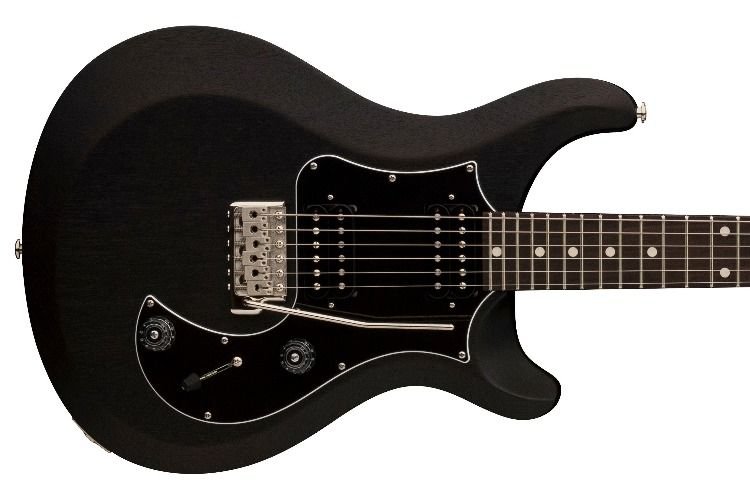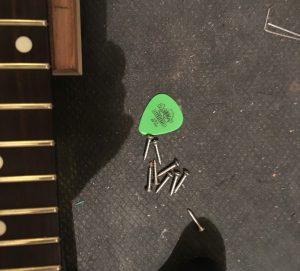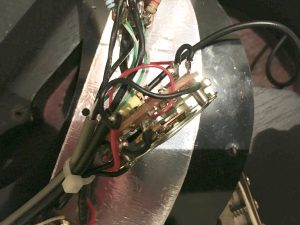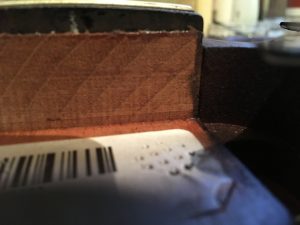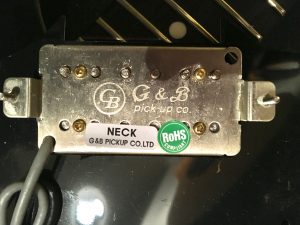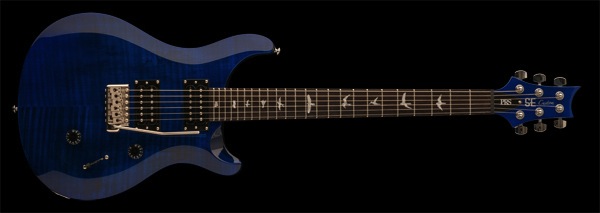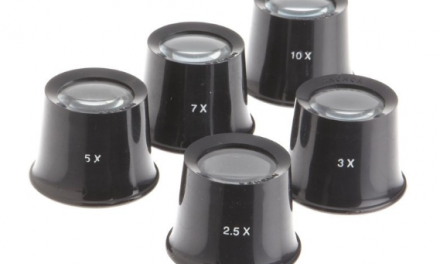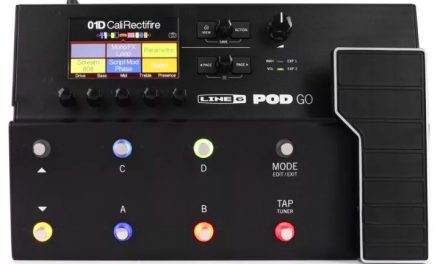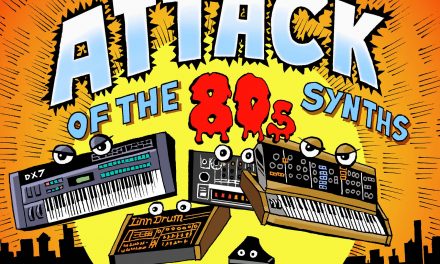Update: You can see this guitar in a comparison to my other PRS in a video on my YouTube channel. Here it is:
Last Updated on 3/10/18
What a great guitar.
Two months ago I was in Guitar Center on Hillsborough Avenue in Tampa, and I spent some time with the PRS S2 Standard 24 Satin guitar. It was missing a knob and it had a little bit of “flat fret syndrome” in the spots where most guitars do (first fret, fifth fret.) But it sang. They had it marked $799, new but missing a knob, which was a good deal (when a new one was $999.) I don’t spend that kind of money on electric guitars, as faithful site visitors know, but I was tempted. I forgot about it. And then yesterday I found one (2015 model) at the Orlando Guitar Convention for around $500, and I snapped it up. Why only $500? Probably because it needed some fretwork.
The Good
Find me a better electric guitar for $500. Good luck. This is an American-made PRS guitar and the craftsmanship is excellent, with the exception of the fretwork at the 5th fret (more on that later.) The pickups are NOT made by PRS, but are basically a Korean copy of the PRS 85/15 model. In my opinion, these pickups do single notes extremely well, and are OK for chords but not great. The guitar has a wonderful sustain – it really does “sing” when you play it. It’s mahogany (neck and body) and sort of reminds me of a Gibson SG satin, but it’s not as growly. The tuners are American PRS locking tuners and they’re fantastic. I’m not sure what the nut is, but it sounds great and was set up perfectly.
To the left, the screws after I took the pickguard off. Look at the size of those screws! They’re massive. It’s a small little touch, but a good one. Strat screws are half that size, and twice as likely to strip.
The neck (like the whole guitar) is satin, which is my favorite kind of neck. It’s not as thin as my PRS SE Custom 24, but it’s not as thick as a Les Paul. It’s a nice profile. The radius is 10 inch, so it’s really comfortable. And like most PRS guitars, the scale length is 25, which is between a Les Paul and a Strat. I’m a big fan of the 25 inch scale length.
Another really nice touch is a good quality blade switch. My Korean-made PRS SE Custom 24 which sells for around $750 uses a cheap box switch. My Mexican-made Fender Strat has a good quality blade switch like this one. So I’m pleased to see a good switch that I will never need to replace. It’s also what I’d expect on a thousand dollar instrument.
The guitar plays like a dream, but is not very forgiving of an inadequate setup. This is a thousand dollar guitar and it’s worth a thousand dollars. Like the Gibson Les Paul Tribute series, it’s a high quality guitar where they cut mostly cosmetic corners to bring the price way down.
Update, 2/28/18: In this review, I refer to some fret wear. This guitar was owned and played by someone else for two years. This strikes me as odd – either they played it every single day for two years, or the fret wire PRS is using is about normal in terms of hardness. PRS is known for using really hard fretwire – I wonder if they are using a less expensive fret wire on their S2 line? IDK.
However, the GOOD news is that I took the strings off, put the guitar on my bench, and discovered the neck is dead straight and dead flat (within its 10 inch radius.) It’s stunningly perfect. I’ve worked on a lot of inexpensive guitars, and the necks are never, ever as straight or flat as this one. It’s really outstanding, and it explains a little bit why you pay more for quality guitars. I’m doing a level/crown on this guitar right now, and I already know it’s going to play amazing when I’m done.
When I took the pickguard off, I took a pic of the end of the neck. It’s rift-sawn, as you can see in the picture. What, you may ask, is the difference how the neck was sawn? It depends on who you talk to. In general, people who care about such things will tell you that quarter-sawn is the best, rift-sawn is the second best, flat-sawn is the third best. Which also tells you the order of expense. What a coincidence. I think we’re into cork-sniffing when we talk about these three wood cutting techniques, but I’m willing to admit I could be wrong.
The Bad
I’ve played a few different examples of this guitar, and they all had a little bit of an issue on the high E string at the 5th fret. That can be solved by someone who does fretwork (like me), but it’s something to think about if you’re buying one of these new or used. Other than that, the fretwork is great. Unlike the Gibson Les Paul Tribute series, PRS does a great job on their fretwork (except for the issue I just mentioned.) And if I’m honest, I think the low E string is a little prone to going off the edge of the fretboard when you apply vibrato, and that happens to me even after I moved the nut slightly to the right to compensate.
The pickups (as pointed out above) may do leads well, but for power chords I prefer my fave humbucker, the Seymour Duncan Pearly Gates. PRS prides themselves on their pickups, but in general I’m not a huge fan of them. And these are not PRS pickups – they’re G & B copies. Just like in my PRS SE. Whether they mate well with your amplified no one can say. And you can pull a knob and turn them into single coil pickups, which to me sound the same only thinner and wimpier. I’m not a fan of doing that to humbuckers. If you want single coils, buy a guitar with single coils.
To clarify, although I put the pickups under bad, they’re not bad pickups. They’re sufficiently mediocre.
The Ugly
The satin finish is not for everyone. This guitar is not a stunner – it’s fairly plain jane to look at. Mine is black, but they also have a sunburst that looks pretty good. Regardless, this is a no-frills guitar. If you care about looks, the thousand dollars you’ll pay for this guitar could purchase something that’s far more attractive. A used Epiphone Les Paul can be found for $250 with binding and a burst finish. Won’t play like this guitar, though.
Summary
This is a working musician’s instrument. Some will replace the pickups, most won’t. I probably won’t. (Edit – Ha ha ha! Yes I will.)
From an expressive standpoint, I’m not sure this guitar can be beat for around a grand. The Sterling JP150 would give it a run for its money – that guitar plays great. But I think I prefer this one. Despite the looks, there’s just something extremely musical about it. It’s hard to put into words, but the best I can do is to say what I’ve already said – it sings. And if I’m honest, I don’t like the looks of the JP150. I think it’s a dumb body shape. I love the standard PRS body shape.
One more thing. Some people will say that this guitar “sings” and sustains great because it has a super thin satin finish. Others will argue that the finish has nothing to do with how a guitar sounds, because science. I’m not sure how I feel about it. I don’t know why this guitar sings. I only know it does.

